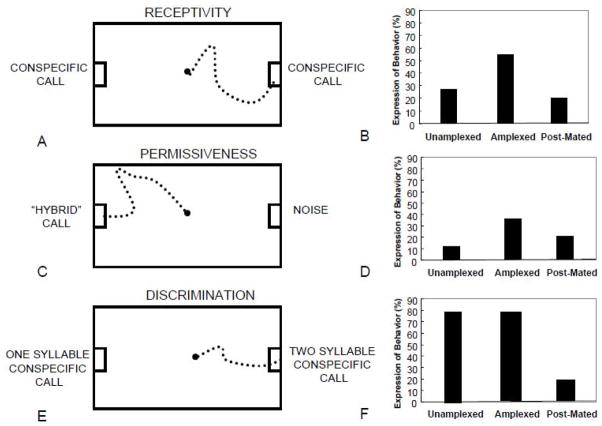Figure 1.
Examples of phonotaxis tests in female túngara frogs at different reproductive stages indicating differences in sexual arousal. A: Diagram of receptivity test; conspecific call of some type is played from each speaker on either side of the test chamber. Female is considered receptive if she approaches either speaker. B: Percent of females expressing behavior when in the unamplexed state (prior to choosing a male), when in the amplexed stage (after choosing a male and initiating mating, when eggs are close to release), and after mating. C: Diagram of permissiveness test; a synthetic call melding conspecific and heterospecific acoustic elements usually yielding low responses is played from one speaker and noise from the other. Female permissiveness is measured by how likely she is to approach the synthetic —hybrid call. D: Percent of females expressing behavior when in the unamplexed state (prior to choosing a male), when in the amplexed stage (after choosing a male and initiating mating, when eggs are close to release), and after mating. Permissiveness increases when receptivity is high. E: Diagram of discrimination test; attractive 2-syllable conspecific call is played from one speaker and a less attractive 1-syllable call is played from the other to test female’s ability to discern differences in conspecific calls. F: Percent of females choosing the 2 syllable call is high in both the unamplexed and amplexed stages indicating that the receptivity and permissiveness results are not due to a difference in an ability to detect call differences. Discrimination decreases after mating when receptivity is low and female choices become inconsistent. Data are taken from Lynch et al., 2005. See that paper for further description of experimental design and controls procedures.

